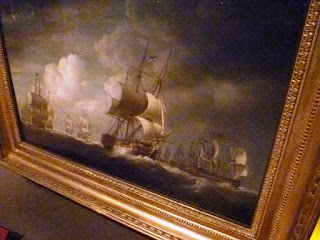One of my favorite places to visit when in London is Greenwich, home of the prime meridian. Until the late 18th century mariners really did not know their positions while at sea. Using sextants they were able to determine their latitude by measuring the angle at noon when the sun was at its highest, but knowing longitude required knowing the time back home. Clocks certainly had developed centuries ago but to maintain a clock's accuracy at sea was a different matter. In 1707 the British, and Admiral Shovall, experienced a marine disaster near the Scilly Isles when several of their ships ran aground killing over a 1000 sailors.

A few years after this disaster the British Parliament passed a law stating it would give the first person who developed a mechanism to tell time (position) at sea to a given accuracy a reward of 20,000 pounds (about a million dollars in today's monetary units). Well, John Harrison, a clock maker, spent the rest of his life to develop such an instrument, a chronometer. It encountered great resistance from the Board that had been created to make the judgement and it took him 4 tries to build it. All of his chronometers are on display at the Greenwich observatory.
 |
| Harrison's "H4" chronometer, the one that won him the prize |
|
The next issue became one of where the "prime meridian" would be located as by the mid 19th century several countries, including the U.S., France, and England, based the meridian calculation in their respective countries. In 1884 an International Meridian Conference was convened in Washington, DC and it was agreed that 0 degree meridian of longitude would be situated along that meridian that went through the observatory located in Greenwich.
 |
| Straddling the prime meridian: part of me is in the eastern hemisphere while the other part of me is in the western hemisphere |



No comments:
Post a Comment